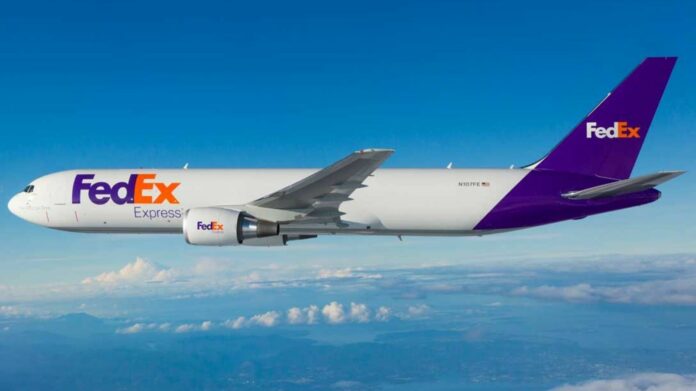
A cargo plane could have collided with an aircraft carrying commercial passengers at an Austin airport after air traffic controllers gave both planes clearance to use the same runway Saturday morning.
A FedEx cargo plane was moments away from landing on a runway where a Southwest Airlines flight was taking off, the Federal Aviation Administration said, before the cargo plane abruptly changed course. Radar of the near-collision showed the FedEx plane appearing to fly directly over the Southwest jet, and at their closest points horizontally, the two aircraft were less than 1,000 feet apart, according to a flight-tracking group that analyzed the data.
The FAA and the National Transportation Safety Board are investigating the incident, which the NTSB described as a “possible runway incursion.”
FedEx Flight 1432 was cleared to land at Austin-Bergstrom International Airport’s Runway 18-Left at 6:40 a.m. Central time, the FAA said in a statement based on preliminary information.
At that point, the FedEx aircraft was still several miles from the airport.
Shortly before the FedEx plane was due to land, an air traffic controller cleared Southwest Flight 708 to depart from the same runway, the FAA statement said.
The pilot of the FedEx airplane discontinued the landing and pulled up, the FAA said, and the Southwest plane took off safely, bound for Cancún. The FedEx flight circled the airfield and landed safely 12 minutes later, according to Flight Radar 24, which tracks aircraft and flights.
The NTSB was sending two investigators to Austin, NTSB spokesman Eric Weiss told The Washington Post on Sunday. A preliminary NTSB report could be available in 15 days.
In an animated video released by Flight Radar 24, the Boeing 767 cargo plane operated by FedEx approaches the same runway that the Southwest plane was using.
The cargo plane nears then directly passes over the commercial flight. For a few seconds it can be seen flying directly over the Southwest plane, then it makes a sharp turn away from the runway.
According to Flight Radar 24, the Southwest plane was cleared to take off when the FedEx plane was three miles from the runway.
It is unclear whether it was air traffic controllers who alerted the pilots about the imminent collision, or whether either of the pilots saw the other aircraft.
In an audio recording, reportedly from air traffic control in Austin, a warning is issued: “Southwest abort. FedEx is on the go,” but it is yet to be determined if that was issued by the pilot of the Boeing 767 or air traffic controllers. The Post could not verify the authenticity of that recording.
Southwest Airlines and FedEx referred The Post’s questions about the investigation to federal authorities Sunday.
The FedEx flight, which was carrying cargo from Memphis, “safely landed after encountering an event just before landing at Austin-Bergstrom International Airport Saturday morning,” said Shannon Davis, a FedEx spokesperson.
Austin-Bergstrom International spokeswoman Elizabeth Ferrer told The Post that the airport was willing to assist the investigation.
A similar incident involving a near-collision of two planes occurred last month at John F. Kennedy International Airport in New York, where a Delta Air Lines pilot aborted a takeoff to avoid hitting another jet, according to federal aviation officials and an audio recording of the incident.
Air traffic controllers stopped Delta Flight 1943 as it prepared to take off at 8:45 p.m., after noticing that an American Airlines Boeing 777 was crossing the runway in front of it. The Delta plane, a Boeing 737, came to a safe stop about 1,000 feet from where American Flight 106 had crossed the runway from an adjacent taxiway, the FAA said.
It all happened in about 12 seconds, according to an audio recording by LiveATC, a website that monitors and shares air traffic control communications.
(c) 2023, The Washington Post · Maham Javaid
Source: Matzav